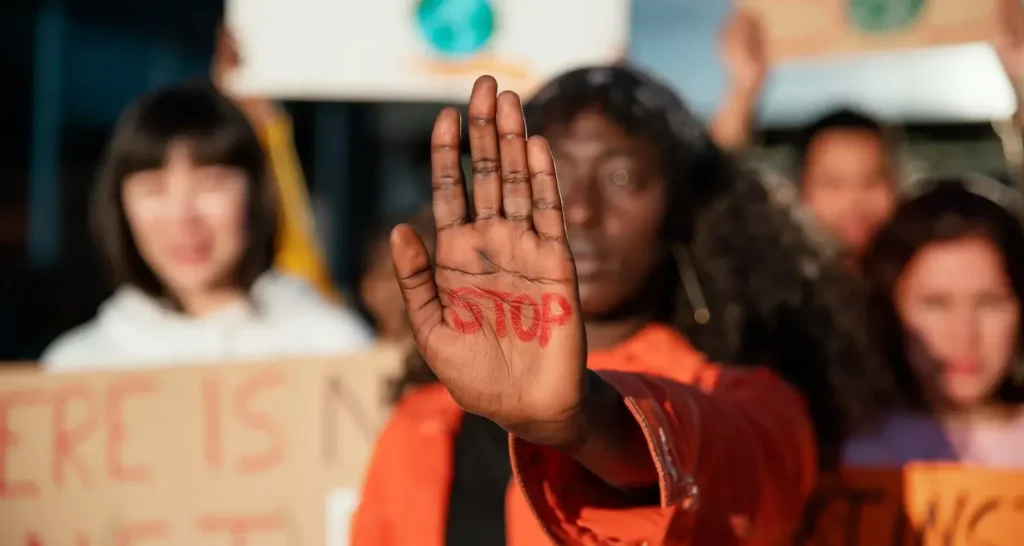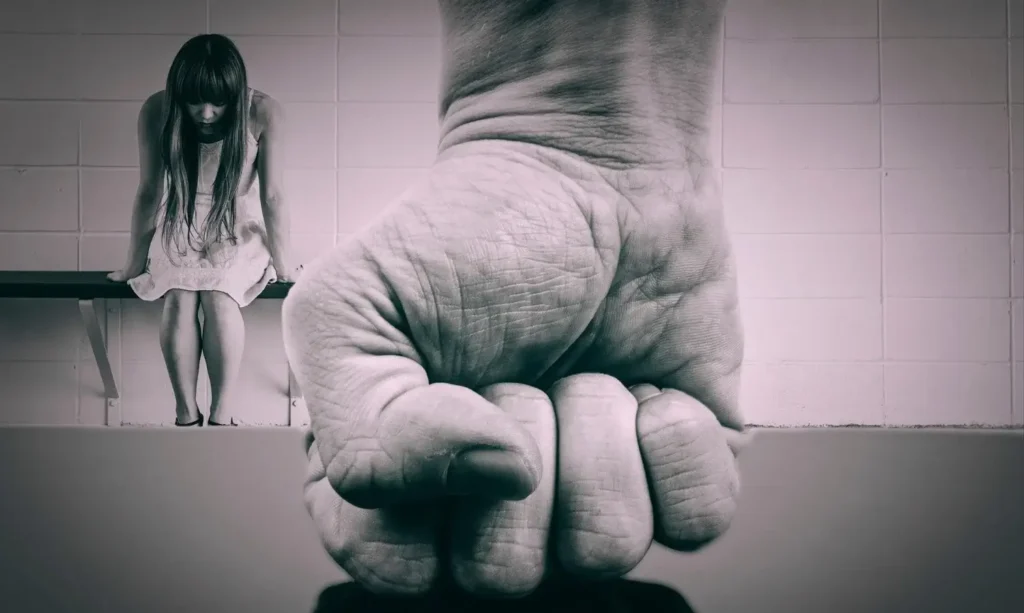I remember Elena, a human rights activist from Venezuela. She told me about her journey to seek asylum in the United States. Her story of courage and resilience is shared by many human rights defenders who risk everything to protect freedom.
As a human rights defender seeking asylum, you face a critical choice. The path to protection is complex, but knowing the legal procedures can give you hope. This guide will help you understand the asylum process for human rights defenders in the United States.
Your safety and legal rights are very important. The asylum process is a lifeline for those who have faced persecution for defending human rights. Each step you take shows your commitment to justice and human dignity.
Key Takeaways
- Asylum provides critical protection for human rights defenders facing persecution
- Understanding legal procedures is essential for a successful asylum application
- Comprehensive documentation is key to verifying your status
- Professional legal advice can greatly improve your asylum chances
- The United States has specific ways for human rights defenders to seek asylum
Table of Contents
Understanding Human Rights Defender Status and Asylum Eligibility
Getting asylum as an activist is complex. You need to know about human rights defender categories and what makes you eligible. Your path to safety starts with understanding the laws that protect those facing persecution.
The world recognizes many types of human rights defenders who might get asylum. These people fight for basic rights and often risk their lives in their home countries.
Defining Human Rights Defender Categories
- Journalists exposing government corruption
- Political activists challenging oppressive regimes
- Community leaders defending marginalized populations
- Environmental advocates confronting harmful practices
- LGBTQ+ rights champions
Qualifying Criteria for Asylum Protection
To get asylum, you must show:
- You have a real fear of being persecuted in your home country.
- You are being targeted because of your human rights work.
- You can’t get help from local authorities.
- You have strong evidence that you could be harmed.
Documentation Requirements for Status Verification
| Document Type | Purpose | Recommended Format |
|---|---|---|
| Official Threats | Proving direct persecution | Signed legal documents, arrest warrants |
| Media Evidence | Documenting public advocacy | News articles, published reports |
| Witness Statements | Corroborating personal experiences | Sworn affidavits, testimonies |
“The strength of human rights defenders lies not in their immunity, but in their courage to speak truth to power.” – International Human Rights Commission
Your detailed documents and story are key to proving you’re a human rights defender. Gathering strong evidence will help your application and boost your chances of safety.
Initial Steps for Seeking Asylum for Human Rights Defenders
If you’re a human rights defender looking for safety in the United States, knowing the first steps is key. Your path to a safe place starts with careful planning and action.
Seeking asylum means taking quick and precise steps to protect your rights. It’s about showing you’re a political dissident who needs protection. Timing and having the right documents are very important.
- Determine your legal entry method into the United States
- Prepare essential personal documentation
- Understand your rights as an asylum seeker
- Collect evidence of possible persecution
Start by focusing on a few important actions:
- Legal Entry Verification: Make sure you entered the United States legally
- Immediate Asylum Declaration: Say you want to seek asylum when you arrive
- Documentation Preparation: Get all your important documents ready
| Action Step | Key Considerations |
|---|---|
| Entry Method | Ensure legal and documented entry |
| Asylum Intention | Clearly communicate protection needs |
| Documentation | Compile complete evidence of risk |
Going through the asylum process takes time, care, and strong documentation. You aim to show your true need for protection as a human rights defender.
Critical Documentation and Evidence Collection Process
Getting asylum support for rights activists needs careful documentation. Your evidence is key to your asylum claim. It can turn your chance for safety into a real sanctuary.
It’s vital to gather strong evidence for human rights defenders. Your documents should show a clear story of persecution and danger.
Gathering Proof of Persecution
Focus on building a strong narrative of the threats you’ve faced. Important documents include:
- Official police reports documenting threats
- Medical records showing injuries from persecution
- Sworn affidavits from witnesses
- News articles reporting attacks on activists
- Communication records indicating targeted harassment
Organizing Supporting Materials
Organizing your documents well can boost your asylum application. Create a timeline that:
- Shows events in order
- Links your human rights work to the threats
- Shows a pattern of persecution
- Includes evidence from different sources
Translating Essential Documents
Accurate translation is critical for asylum applications. Certified translations ensure that every detail of your experience is precisely communicated. Use professional translators who know legal and human rights terms.
Remember, your documents are your way to safety and recognition as a human rights defender.
Safe Haven Immigration Pathways and Protection Mechanisms
Understanding immigration pathways is key for human rights champions. The United States has several important options for those seeking asylum. These options are for those facing danger in their home countries.
There are specific visa categories for vulnerable advocates:
- U Visa for victims of crimes
- T Visa for human trafficking survivors
- Special Immigrant Visas (SIVs)
- Refugee Status Program
Exploring protection mechanisms is vital for human rights defenders. They should look at different legal entry strategies for safety. The asylum process requires documenting personal risks and showing credible threats.
| Visa Category | Primary Purpose | Key Eligibility Criteria |
|---|---|---|
| U Visa | Crime Victim Protection | Suffered substantial physical/mental abuse |
| Refugee Status | Persecution Escape | Well-founded fear of persecution |
| SIV Program | Professional Advocate Support | Worked with US government/organizations |
Your situation will guide you to the best pathway. Seeking advice from immigration attorneys who focus on human rights can help. They offer tailored guidance through these complex systems.
Filing Your Asylum Application: Step-by-Step Guide
Getting through the asylum application process can be tough for human rights defenders. This guide will help you understand how to submit your application. It also shows how to protect your rights as an activist.
It’s important to know how the U.S. asylum application works. The first step is to prepare well and pay attention to details.
Form I-589 Completion Strategies
When you fill out Form I-589, you need to be precise and thorough. Here are some key areas to focus on:
- Provide all your personal information
- Explain why you’re seeking asylum
- Share your experiences of persecution
- Make sure you fill out every section correctly
Avoiding Common Application Pitfalls
Activists need to watch out for mistakes that could harm their application:
- Don’t leave out important information
- Include all necessary documents
- Don’t miss the filing deadline
- Clearly explain why you’re at risk of persecution
Application Processing Expectations
The time it takes to process an asylum application can be long and complex. Here’s what you might expect:
| Stage | Estimated Duration |
|---|---|
| Initial Review | 3-6 months |
| Interview Scheduling | 6-12 months |
| Final Decision | 12-24 months |
Pro tip: Keep good records and be ready for delays. Your patience and careful work are important for a successful application.
Legal Representation and Advocacy Support Options

Going through the asylum process for freedom fighters is complex. You need strong legal support. As a human rights advocate, you’re on a journey to find a safe place. You need experts to help protect your rights and make your case stronger.
Finding the right lawyer is key for your asylum application. Lawyers who focus on immigration know the special challenges you face. They help protect your rights as a human rights defender.
- Pro bono legal services for asylum seekers
- Non-profit organizations specializing in human rights advocacy
- Immigration law clinics at universities
- International human rights legal networks
When looking for a lawyer for your asylum case, think about these important points:
| Criteria | Importance | Recommended Action |
|---|---|---|
| Experience with asylum cases | High | Verify track record of successful asylum applications |
| Human rights expertise | Critical | Seek attorneys with international human rights background |
| Language capabilities | Essential | Ensure effective communication and document translation |
Pro tip: Many organizations offer free initial consultations for human rights defenders seeking asylum. Research local and national advocacy groups that provide complete support for freedom fighters.
“The right legal representation can be the difference between safety and persecution” – International Human Rights Legal Network
Your support network is very important. Connecting with human rights groups can give you more resources, emotional support, and advice. They help you through your asylum process.
Preparing for Your Asylum Interview and Hearing
Getting ready for an asylum interview is key, more so for those fleeing persecution. Your story is vital to show why you need asylum. This is your chance to share your experiences and why you need protection.
To succeed, you must prepare well. You aim to tell a clear, consistent story of your human rights work.
Interview Preparation Strategies
- Organize your personal documentation chronologically
- Practice explaining your experiences with clarity and emotional control
- Review possible questions with a legal advisor
- Gather evidence of persecution
Key Points to Address During Testimony
| Focus Area | Recommended Approach |
|---|---|
| Personal Background | Give a detailed overview of your human rights work |
| Persecution Evidence | Show specific incidents that prove threats |
| Fear of Return | Describe the real dangers you face |
Post-Interview Procedures
After your interview, officials will check your story. Be patient during this time. Your lawyer can guide you on what to expect next.
Every asylum case is different. Your honest and detailed story can greatly help in getting protection.
Rights and Responsibilities While Awaiting Decision

If you’re a human rights champion seeking asylum, knowing your rights and duties is key. The wait can be tough, but understanding your legal position helps you get through it.
Getting work authorization is important for asylum seekers. You can apply for an Employment Authorization Document (EAD) 150 days after you file your asylum application. This lets you work legally while you wait for your asylum decision.
- Apply for work authorization 150 days after filing
- Maintain current contact information with immigration authorities
- Keep all required documentation accessible
- Attend all scheduled immigration meetings
You also get access to vital social services during this time. Many groups help activists in their sanctuary journey. They offer:
- Mental health counseling
- Legal consultation
- Language support
- Community integration assistance
Important travel restrictions apply during your asylum process. Traveling outside the U.S. without permission can harm your asylum application. Always talk to an immigration lawyer before traveling abroad to know the risks.
Your commitment to human rights continues even as you seek protection. Stay informed, engaged, and connected with support networks.
It’s vital to follow U.S. laws. Keep your legal record clean, go to all required meetings, and work with immigration authorities. This will help your asylum case.
Emergency Protocols and Expedited Processing
Human rights defenders facing threats can get quick help through special emergency plans. The United States has special ways to help those in danger because of their work.
Getting help fast means knowing about special quick ways to protect those at risk.
Fast-Track Options for High-Risk Cases
For those in danger, there are fast ways to get help:
- Prioritized individual case review
- Expedited interview scheduling
- Accelerated background check procedures
- Humanitarian parole considerations
Emergency Support Services
There are key services to help right away during the asylum process:
| Support Service | Description |
|---|---|
| Legal Consultation | Free initial consultations with immigration attorneys specializing in human rights cases |
| Emergency Relocation | Temporary housing and protection resources for high-risk individuals |
| Medical Support | Access to healthcare and psychological support services |
Temporary Protected Status Alternatives
Temporary Protected Status is a backup plan for those in danger. It offers a safe way to stay in the U.S. while things get sorted out.
- Provides temporary work authorization
- Prevents mandatory return to dangerous regions
- Allows legal residence during pending reviews
Knowing about these emergency plans can be a lifesaver. It helps keep you safe and protects your rights as a human rights defender.
Conclusion
Your journey as a human rights defender seeking asylum is more than personal. It’s a key way for activists to protect human rights in tough places. The process needs careful planning, strong documentation, and never giving up.
Knowing the legal steps helps you move through immigration systems well. Every action you take, from collecting evidence to preparing for interviews, makes your case stronger. Your story is important, and the U.S. has laws to help those facing persecution for their advocacy.
Seeking asylum is not just about survival. It’s about keeping your human rights work alive. This guide will give you the confidence to face your asylum journey. By documenting your experiences and knowing your rights, you turn a tough process into a chance to keep advocating for human rights globally.
Your bravery in defending human rights knows no borders. The asylum process is hard, but you’re not alone. There are legal help, support groups, and experts ready to help you get the protection and platform to keep fighting for human rights worldwide.
FAQ
Who qualifies as a human rights defender for asylum purposes?
A human rights defender is someone who fights for human rights. This can be through peaceful advocacy, journalism, or community organizing. You must show that your work has made you a target for persecution in your home country.
What documentation do I need to support my asylum claim as a human rights defender?
You’ll need lots of documents. These include official threats, police reports, and medical records of attacks. Also, media coverage, witness statements, and letters from organizations you work with. Your personal story of facing risks because of your work is also important.
How long does the asylum application process typically take?
The asylum process can take months to years. It usually starts with a 3-6 month wait. But, for those fighting for human rights, it might take 12-24 months. If you’re in danger, you might get faster help.
Can I work while my asylum application is pending?
Yes, you can apply for work authorization 150 days after you file. Once approved, you get an Employment Authorization Document (EAD). This lets you work legally in the U.S. while your case is being processed.
What happens if my initial asylum application is denied?
If your application is denied, you can appeal. You can ask for a hearing and appeal further through the Board of Immigration Appeals. Having a lawyer is key to help you through this.
Are there special protections for human rights defenders at high risk?
Yes, the U.S. has special help for those at high risk. You might get fast asylum processing or temporary protected status. This is if you show you’re in danger.
Do I need an attorney to file an asylum application?
While you don’t have to have a lawyer, it’s highly recommended. A good immigration attorney can help a lot. They can help with documents, legal stuff, and making your case strong.
What support services are available for human rights defenders seeking asylum?
There are many services available. These include free legal help, mental health support, and programs to help you settle in. Organizations like Human Rights First and the International Refugee Assistance Project offer important guidance and support.
How can I prove persecution related to my human rights work?
To prove persecution, you need strong evidence. This includes threats, government records, medical proof of harm, and witness statements. You also need to show how your human rights work led to these risks.
What are the most common challenges human rights defenders face during the asylum process?
Challenges include language barriers and complex legal rules. It’s hard to get the right documents and prove you’re in danger. You also face emotional challenges, bureaucratic hurdles, and questions about your credibility.










